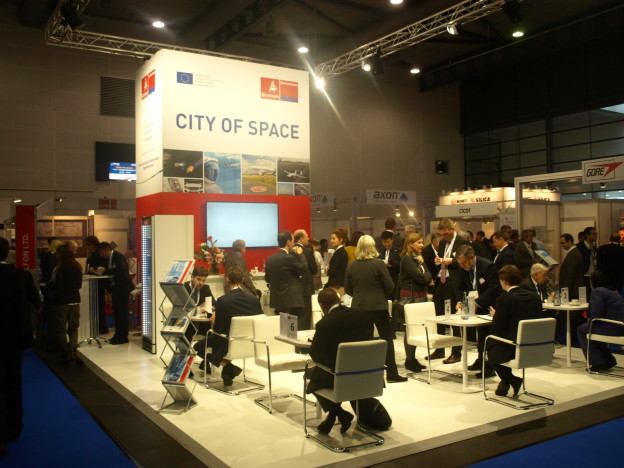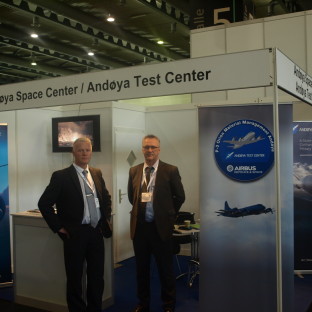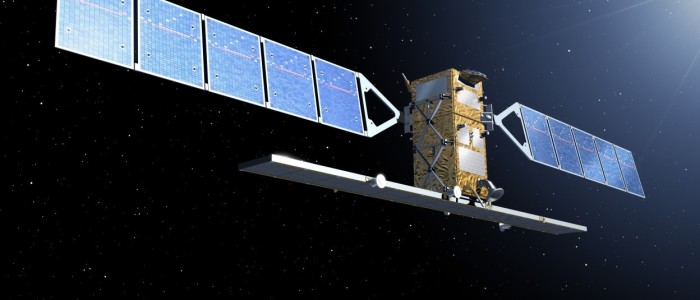
Bremen, the German City of Space. Host for the “Space Tech Europe 2015”. Credit: Nordicspace.
For the first time, the space industry held their annual gathering in Europe. Space Tech Europe gathered most of the most important space industries in Europe and throughout the evening it became evident what the newest trend within the community is; cheaper and environmental friendly Space technology.
New Launcher Family
Large parts of a missions costs, independent of scientific or commercial purpose, is connected to the launch activities. The European main launcher Ariane 5 is very reliable and has after a somewhat difficult introduction had sixty-five successful launches, half of the communication satellites in the world. However, there are two major problems; now, cheaper launch possibilities and launchers for single payloads exist. To meet this market challenge, Europe is forced to think of new ways to keep their leading position, and not least, keep the principle “Independent Access to Space”.
Designing new launchers both technologically and politically is challenging and the solution that was chosen is a compromise between the large contributors to the European launcher programme, France, Italy and Germany. The future launcher family will consist of three different launchers Vega C, Ariane 62 and Ariane 64. Together they will cover all sizes of payloads up to 10.5 tons to Geostationary Transfer Orbit. Ariane 6 can be ready for its maiden mission in 2020, and the new launcher family will phase out the existing Vega, Soyus and Ariane 5 over the first years of the next decade.
Vega C is a launcher for the small satellites based on the existing Vega, but further developed and with a payload capacity of 2200 kg, 700 kg more than the existing launcher. The first stage of this launcher will also be strapped on boosters for the Ariane 6, two for Ariane 62 and four for Ariane 64, very effectives.
Ariane 6 will like the first and the main stage use cryogenic propulsion based on a further developed Vulcain 2 engine. The second stage also builds on cryogenic propulsion, using the Vinci engine. The Vinci engine is able to restart and has direct deorbiting features to mitigate space debris. The Ariane 62 will be used for single launch configuration while Ariane 64 will be used for large payloads or for double launch of medium class satellites.

Andøy Rocket Range/Andøya Test Center. The Rocket Range plans to launch mini satellites from Northern Norway already in 2018. Credit: Nordicspace
With this launcher family, and the build-up reliability, Europe hopes to maintain the position as the leading launch operator for the commercial market.
Electrical Propulsion For Rising From Transfer Orbit
To lift a communication satellite from the geostationary transfer orbit to the final position 36.000 kilometres above Earth, the satellite engine needs about one ton of fuel. Together, the fuel and satellite engine will raise the weight of a satellite about 30%, weight that could be used for more payloads or reducing the total weight. Electrical propulsion may be the solution, but the transfer time will increase from a few days to about six months. SES, the world’s largest satellite operator, in cooperation with ESA and the industrial partner OHB Bremen, hope to develop an electrical engine that can transfer a satellite to the final orbit over a period of 100 days. The SES/ESA project Electra is a European electric propulsion satellite platform with a weight of only two-thirds of the mass of the traditional chemical propulsion system.
New and Environmental Fuels
A third trend within the space community is developing more environmental types of fuel. The most commonly used fuel for satellites is very toxic, thus, very difficult to handle, therefore, several research institutes focus on this at present. Sweden has a leading position in this field and their micro propulsion system is already flight proven. Fuel for the large launcher is also in constant development, and the need for cheaper and environmental launch of payloads for space seems to be the ultimate drive behind this work as well.
Featured image. Credit; ESA/Sentinel 1


